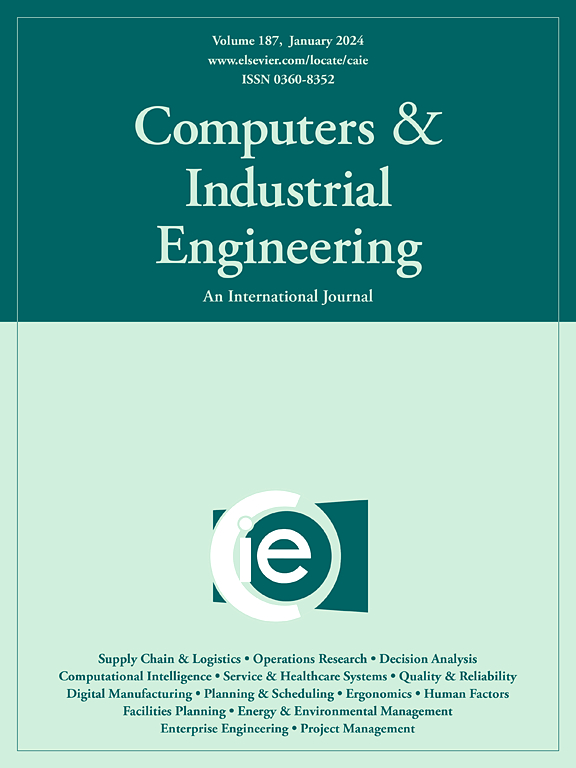Accessibility and congestion optimization in healthcare networks
IF 6.5
1区 工程技术
Q1 COMPUTER SCIENCE, INTERDISCIPLINARY APPLICATIONS
引用次数: 0
Abstract
The design of healthcare networks involves decision-making processes related to facility location, capacity allocation, and user assignment to healthcare centers. These decisions must consider that healthcare networks are often both centralized and fragmented, yet they must support the clinical pathways required by users.
This problem has been widely addressed in the literature within the context of Facility Location Problems and Network Design Problems with Congestion. However, there are few instances where clinical pathways are explicitly incorporated into the modeling. This study proposes an analytical framework for decision-making in healthcare network design that incorporates the structure of clinical pathways with the aim of improving two key aspects: user accessibility and resource congestion.
The proposed framework, referred to as Multi-Objective Healthcare Network Design, is based on the use of Open Queueing Networks to model user flow. Accessibility is evaluated using the Two-Step Floating Catchment Area metric, while congestion is assessed through resource utilization calculation.
The optimization problem is solved using the Adaptive Bisection AUGMECON algorithm, incorporating hypervolume and spread indicators to evaluate the quality of the Pareto front. Implementations in artificial networks and in a real healthcare network in a region of Colombia reveal opportunities for redesigning these systems, with a focus on improving patient flow in accordance with the clinical pathways defined in the network.

医疗保健网络中的可访问性和拥塞优化
医疗保健网络的设计涉及与设施位置、容量分配和医疗保健中心的用户分配相关的决策过程。这些决策必须考虑到医疗保健网络通常既集中又分散,但它们必须支持用户所需的临床途径。这一问题在设施选址问题和拥塞网络设计问题的文献中得到了广泛的讨论。然而,很少有临床途径被明确地纳入模型的情况。本研究提出一个医疗网络设计决策的分析框架,该框架结合临床路径结构,旨在改善两个关键方面:用户可及性和资源拥塞。所提出的框架称为多目标医疗保健网络设计,它基于使用开放排队网络对用户流建模。可达性通过两步浮动集水区度量来评估,而拥堵通过资源利用率计算来评估。采用自适应二分AUGMECON算法求解优化问题,结合hypervolume和spread指标评价Pareto front的质量。在哥伦比亚某地区的人工网络和真实医疗网络中的实施,揭示了重新设计这些系统的机会,重点是根据网络中定义的临床路径改善患者流量。
本文章由计算机程序翻译,如有差异,请以英文原文为准。
求助全文
约1分钟内获得全文
求助全文
来源期刊

Computers & Industrial Engineering
工程技术-工程:工业
CiteScore
12.70
自引率
12.70%
发文量
794
审稿时长
10.6 months
期刊介绍:
Computers & Industrial Engineering (CAIE) is dedicated to researchers, educators, and practitioners in industrial engineering and related fields. Pioneering the integration of computers in research, education, and practice, industrial engineering has evolved to make computers and electronic communication integral to its domain. CAIE publishes original contributions focusing on the development of novel computerized methodologies to address industrial engineering problems. It also highlights the applications of these methodologies to issues within the broader industrial engineering and associated communities. The journal actively encourages submissions that push the boundaries of fundamental theories and concepts in industrial engineering techniques.
 求助内容:
求助内容: 应助结果提醒方式:
应助结果提醒方式:


